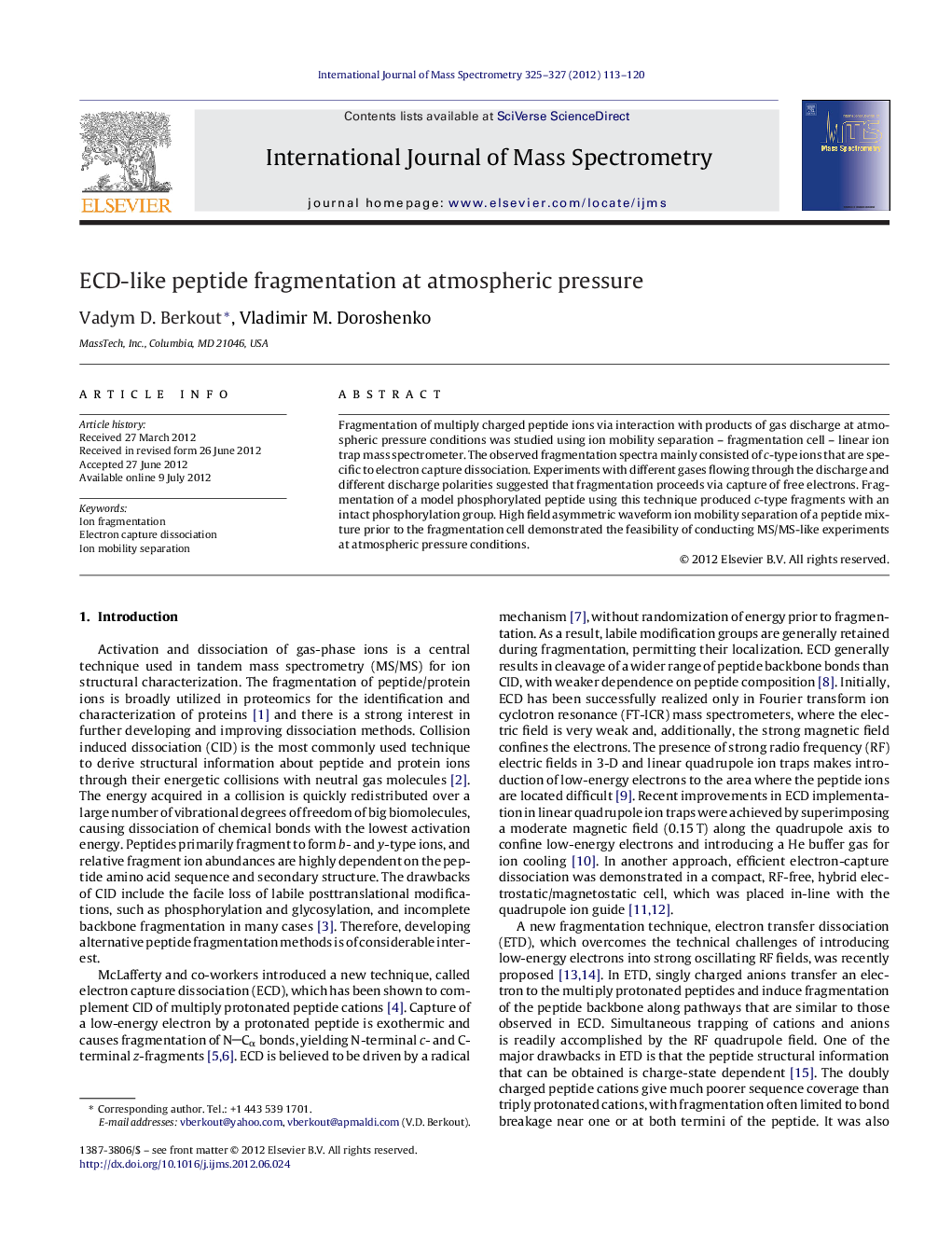| Article ID | Journal | Published Year | Pages | File Type |
|---|---|---|---|---|
| 1192211 | International Journal of Mass Spectrometry | 2012 | 8 Pages |
Fragmentation of multiply charged peptide ions via interaction with products of gas discharge at atmospheric pressure conditions was studied using ion mobility separation – fragmentation cell – linear ion trap mass spectrometer. The observed fragmentation spectra mainly consisted of c-type ions that are specific to electron capture dissociation. Experiments with different gases flowing through the discharge and different discharge polarities suggested that fragmentation proceeds via capture of free electrons. Fragmentation of a model phosphorylated peptide using this technique produced c-type fragments with an intact phosphorylation group. High field asymmetric waveform ion mobility separation of a peptide mixture prior to the fragmentation cell demonstrated the feasibility of conducting MS/MS-like experiments at atmospheric pressure conditions.
Graphical abstractFigure optionsDownload full-size imageDownload high-quality image (158 K)Download as PowerPoint slideHighlights► The atmospheric pressure fragmentation cell produced ECD-like fragmentation spectra. ► Fragmentation proceeds via capture of free electrons produced in the gas discharge. ► c-type and lower charge state molecular ions are mainly observed. ► Peptide phosphorylation group remains intact during fragmentation. ► Ion mobility separation allows for MS/MS-like studies at atmospheric pressure.
